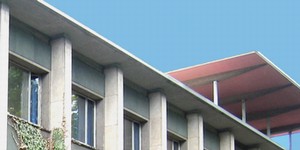CoVR

The Connected Visual Reality Project
During the last few years, video telephony and telepresence have gained acceptance, and their usage is strongly growing. However, economic and technical constraints are still impeding their widespread deployment. Nowadays, the available systems range from corporate high-end multi-screen telepresence rooms to personal video calls on laptops. Due to low-quality audio and video transmission as well as insufficient interoperability, a heterogeneous mix of these systems often suffers from an unsatisfactory quality experience.
The Connected Visual Reality project is a collaborative research project between Ericsson GmbH, two chairs of RWTH Aachen University, and MainConcept GmbH. The aim of the project is to research and evolve high-definition, high-quality visual communication and video conferencing at reasonable cost using heterogeneous networks and devices.
Focus topics of this project are
- Enhanced audio front-end: a microphone array will be used for acoustic beamforming. Binaural rendering will improve the spatial audio experience, and artificial bandwidth extension extends the audio spectrum of participants connected via narrow-band audio links
- Intelligent video analysis: participants are recognized, segmented and tracked, allowing new ways of rendering and annotating participants in a video conference
- Enhanced video compression and transport: scalable video codecs and new high efficiency video codecs will be investigated with respect to their application to video conferencing
- Network integration and scalability: the project will investigate how systems can accommodate many parallel video conferencing sessions with many participants, and which adaptations to network and device characteristics are needed
- Interoperability of visual communication systems: the project will use open control and media plane standards, and improve interoperability by bridging between systems
The project duration is scheduled from May 2011 to April 2013. The first public demonstrations of new features are planned in 2012 and 2013.
The project was selected for funding by the NRW Ziel 2-Program “Regionale Wettbewerbsfähigkeit und Beschäftigung” 2007-2013, co-funded by ERDF “European Regional Development Fund”.
Europe – Investment into our Future.

